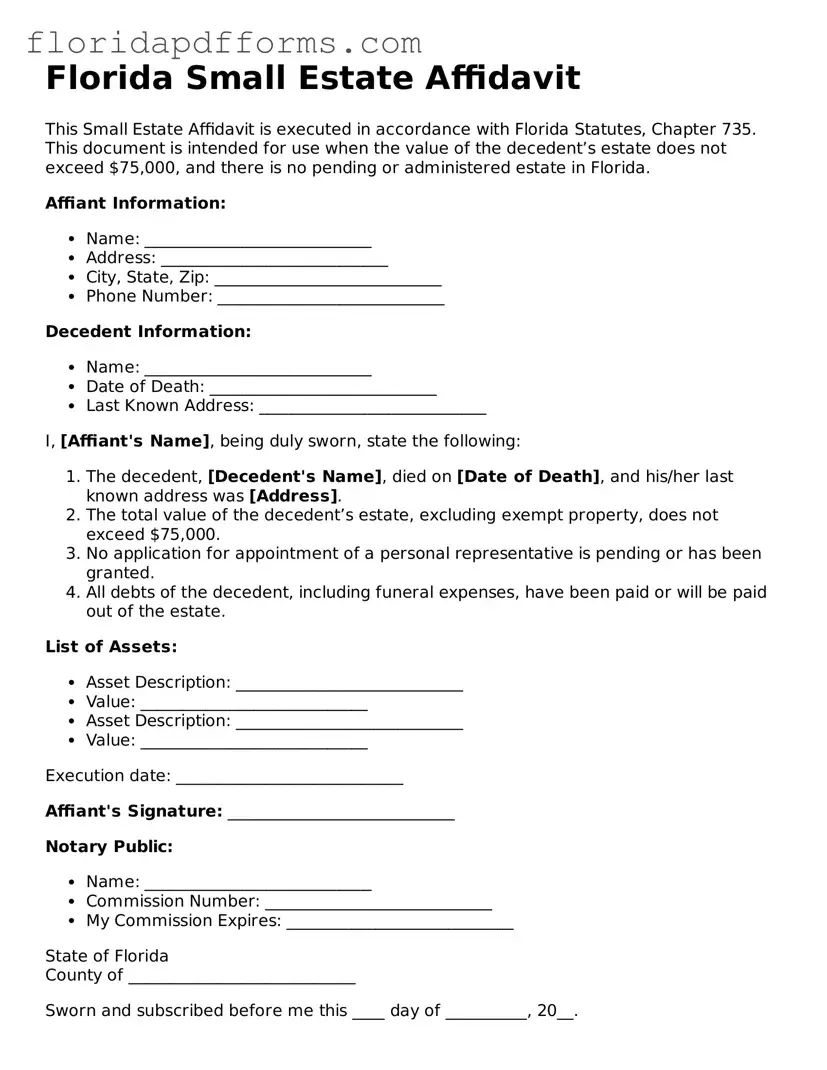The Florida Small Estate Affidavit is similar to the Affidavit of Heirship, which is used to establish the heirs of a deceased person. This document is often used when someone dies without a will. It allows heirs to claim property without going through a lengthy probate process. Both forms aim to simplify the transfer of assets to rightful heirs, making it easier for families to manage the estate of their loved ones.
Another similar document is the Will. While a Small Estate Affidavit is used when someone dies without a will, a Will outlines how a person wishes their assets to be distributed after their death. Both documents serve to clarify the intentions of the deceased regarding their assets, but a Will typically requires probate, while a Small Estate Affidavit can expedite the process for smaller estates.
The Transfer on Death (TOD) deed is another document that shares similarities with the Small Estate Affidavit. A TOD deed allows property owners to designate a beneficiary who will receive the property upon the owner's death, bypassing probate. Both documents facilitate the direct transfer of assets, reducing the time and complexity involved in estate management.
The Affidavit for Collection of Personal Property is also akin to the Small Estate Affidavit. This document allows individuals to claim personal property of a deceased person without going through probate. Like the Small Estate Affidavit, it simplifies the process for heirs, enabling them to access and manage the deceased's belongings more easily.
The Durable Power of Attorney (DPOA) can be compared to the Small Estate Affidavit in that it allows individuals to manage another person's financial affairs. While the Small Estate Affidavit deals with post-death asset distribution, the DPOA is effective during a person’s lifetime. Both documents empower designated individuals to handle specific responsibilities on behalf of another, though they apply in different circumstances.
The Living Trust is another document that has a similar function to the Small Estate Affidavit. A Living Trust allows individuals to place their assets into a trust during their lifetime, which can then be distributed to beneficiaries upon their death without probate. Both documents aim to streamline asset transfer, but a Living Trust provides ongoing management of assets while the individual is still alive.
The Probate Petition is also related to the Small Estate Affidavit. This document is filed to initiate the probate process for larger estates. While the Small Estate Affidavit is used for smaller estates to avoid probate, both documents serve the purpose of transferring assets after death. They differ primarily in the size of the estate and the complexity of the process involved.
Finally, the Declaration of Trust resembles the Small Estate Affidavit in its purpose of asset management. A Declaration of Trust outlines how assets are to be managed and distributed, similar to a Small Estate Affidavit. However, it is typically used to manage assets during a person's lifetime, whereas the Small Estate Affidavit is specifically for handling assets after death.
